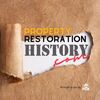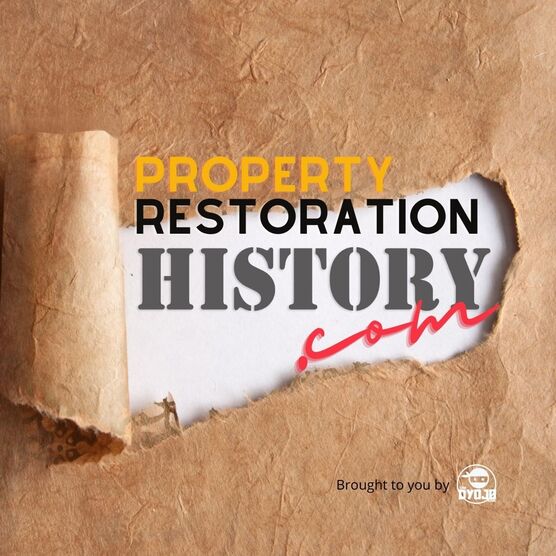|
IAQ Radio, episode 426 from August 12, 2016 featured John Downey, Ken Larsen, and Cliff Zlotnik. The group discussed, "Two articles which appeared in the August issue of the IICRC Journal along with details from the story behind them." While this description may not grab your attention, if you are involved in water damage or the property restoration industry, the content of the articles and the discussion on this podcast are important. Cliff and Ken expressed their concerns over the state of the water damage restoration industry with pointed critiques of the foundation behind the IICRC Applied Structural Drying certification and its subsequent incorporation into the IICRC S500 Standard and Reference Guide for Professional Water Damage Restoration. This episode discusses:
Is Applied Structural Drying (ASD) Scientific?According to Cliff Zlotnik, no one knows "chapters and verse of the S500 better than Ken Larsen. Ken noted that in May 2012, the Journal of Environmental Health demonstrated that a water loss responded to within four hours showed an exponential increase (orders of magnitude) of microbial growth in floor materials. He was disappointed that so few IICRC insiders and leadership acknowledged the results of the research's feedback. Cliff Zlotnik writes in the IAQ Radio blog and show recap expanding on Ken's comments from the show, Problems on water claims is a dominant theme. Contractors find their lack of control on their projects discouraging. Many declare water restoration work is no longer fun or rewarding. The bureaucracy and loss of control is a challenge to contractor’s patience and tolerance. Contractor’s are exhausted by the demand to provide non-compensated services and mandatory investment and utilization of drying documentation software. All these demands stem from the IICRC. The IICRC is the source of these ideas. Readership has been supportive of our method to inspire the IICRC to make the needed corrections. Is Top-Down Drying Realistic?Cliff Zlotnik was motivated to write his article after attending both of the early in-place drying courses. He said that he felt uneasy and uncomfortable about the methodologies for “top-down drying” being taught to restorers. After testing the theories in his original Restoration Science Academy training center he came to different conclusions. Cliff thinks the training courses were unrealistic and summarized part of the fix in tese words, Simplify curriculum, remove complication. To paraphrase the late Jim Darling’s recommendation that the IICRC mold remediation course for workers’ whose first language was other than English could be done in 4 words: “mold bad-clean good!” Drying is pretty simple “wet bad-dry good”; we need to show workers how to get there. Lloyd’s [Weaver] method was simple and it worked. When the IICRC changed the WRT curriculum and exam and added committee “Made Up Stuff”: the IICRC drying formulas, equipment placements formulas, categories of wetness; I could no longer teach it. The photos in the article show air passing through materials and into interstitial spaces. Adjusting curriculum away from the dominance of in-place drying would be a good start. The Role of Water Damage Drying StandardsPete Consigli mentioned that good intentions, such as quicker drying times, can sometimes lead to unintended negative outcomes. He recommended the following, Get away from prescriptive standards. Move to performance based standards. The separation of standards from the reference guide will reduce the confusion. Reference guide is being used and referred to as authoritative when it isn’t.
4 Comments
The DYOJO Podcast conducted an interview with Ed Cross which also uncovered aspects of the development of IICRC Standards as well as the evolution of the Restoration Industry Association (RIA). This interview goes into the last 25 years of Ed's involvement with advocating for property restoration contractors and his pivotal role in the formation and momentum of the RIA's AGA Committee. The episode is titled, "A History of Collaboration, a Future of Advocacy" and is accompanied by an article in Restoration and Remediation Magazine (R&R) by the same name. Highlights include:
Jeff Cross is the host of Straight Talk from ISSA Media which is the group that publishes Cleanfax Magazine. While his show is normally fifteen minutes or less, he rolled extra tape to dive into the history of the Restoration Industry Watchdogs with Cliff Zlotnik and Pete Consigli. For nearly an hour, Jeff and his guests discuss some of the questions the two Watchdogs and others started asking when issues with the formation and revision of the standards came about. The symbol of the Restoration Industry Watchdogs is the German Shepard. When asked to define what a Watchdog is, Pete says. "We challenge what's out there. We ask a lot of questions. We don't always know the answers but we're curious." As the industry was developing the first S520 which is the Standard Reference Guide for Professional Mold Remediation Pete, Cliff, and several others began asking some probing questions about the behind the scenes process and the motivations of some of the players. Standards of Care for Property RestorationCliff believes there have been some key questions that need to be asked whenever standards of care are being composed. Cliff says that there is a problem when we abdicate responsibility from the contractor to a book. The voluntary standards for the restoration industry came as a response to some litigation issues. The American National Standards Institute (ANSI) is a private non-profit organization that oversees the development of voluntary consensus standards for products, services, processes, systems, and personnel in the United States. There are two approaches of standards:
As well as two types of standards:
The standards of care for the property restoration industry have been voluntary in that they are not compulsory such as OSHA standards. They are also prescriptive, outlining how something should be done but not always quantifying the performance outcomes. Asking Good QuestionsIn 2003 Pete and Cliff co-wrote an article, The Future of the Water Loss Industry: Joy and Prosperity or Gloom and Doom? for Cleaning and Restoration (C&R) Magazine. Some people took offense to the publication, as the pair share in this interview, but they were asking the right questions. Being contentious is not a bad thing, a good debate helps to refine the process and builds a better end product through "contentious collaboration."
The pair mentions in the article, "As professional restorers engaged in the sewage and mold remediation segment of Unnecessary Use of Big WordsCliff closes the discussion with a recap of his reservations about fear mongering that was used in the creation of prior standards and still being promulgated in the development of upcoming standards such as fire restoration. He mentions that some people like to hide behind big words in contrast to a pure sign of having a deep knowledge of a subject is whether you can explain it in simple terms to a six year old.
Additional resources on this topic:
|
AuthorWe are tracking down and sharing the people, innovations, movements, and other fun facts from the evolution of the property restoration industry. Please reach out if you have stories and relics to share. Archives
July 2023
Categories
All
Sponsors: |
|
|

 RSS Feed
RSS Feed

